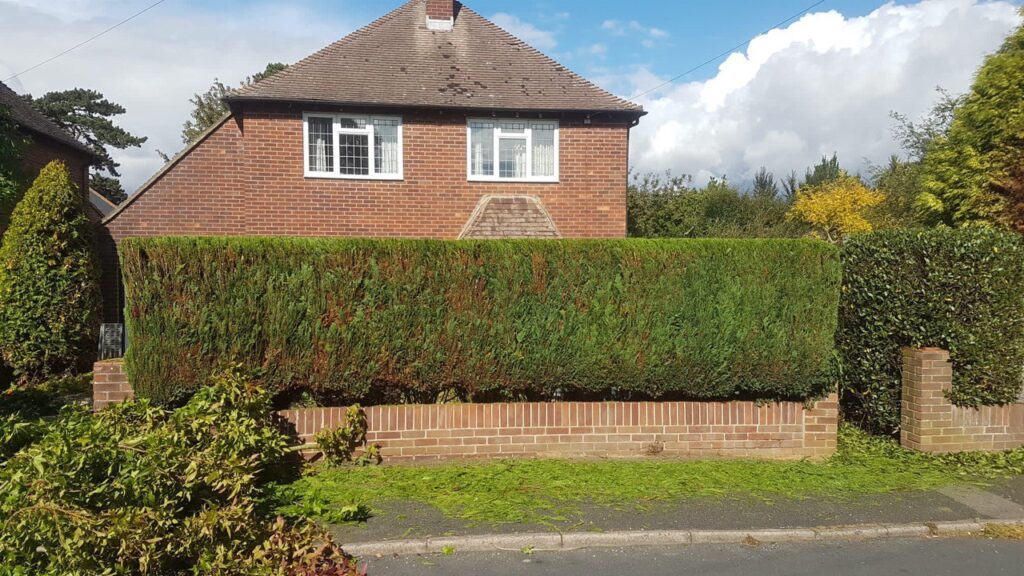Bad Pruning Is Worse Than No Pruning at All
Introduction
In the world of tree care, pruning is one of the most essential and frequently misunderstood practices. For property owners across Cranfield and the wider Bedfordshire area, pruning is often seen as a necessary task to tidy up overgrown trees or reduce shade. But when done incorrectly, pruning can do far more harm than good—sometimes causing irreversible damage that could take years to rectify.
At Cranfield Tree Surgeons, we’ve seen the consequences of bad pruning first-hand. Whether it’s a well-meaning DIY attempt or a rushed job by someone unfamiliar with tree biology, improper cuts can compromise a tree’s structure, health, and safety. In many cases, no pruning would have been the better choice.
What Counts as Bad Pruning?
Poor pruning isn’t always obvious straight away, but the damage sets in quickly. Common mistakes include:
- Topping (removing the entire top of the tree)
- Over-pruning (removing too much foliage in one session)
- Cutting too close to the trunk (flush cuts)
- Leaving stubs that don’t heal properly
- Pruning during the wrong season for the species
These mistakes disrupt the tree’s natural healing process, create entry points for disease, and interfere with its ability to produce energy through photosynthesis.
The Hidden Damage It Causes
While a badly pruned tree may still stand for a while, the long-term consequences can be devastating:
- Weak Regrowth: Topped trees often send out fast-growing, weak shoots that are poorly attached and prone to snapping.
- Increased Risk of Disease: Incorrect cuts don’t seal properly, leaving open wounds that attract pests and fungal infections.
- Structural Imbalance: Removing too much from one side or altering the tree’s shape makes it vulnerable to wind damage.
- Reduced Lifespan: A healthy tree can live for decades—or even centuries. Bad pruning often shortens its life significantly.
- Aesthetic Decline: Once a tree’s natural form is lost, it’s incredibly difficult to restore its original shape or visual appeal.
Why No Pruning Might Be Safer
In some cases, leaving a tree alone is genuinely safer than pruning it poorly. Trees are naturally self-regulating—when left undisturbed, they grow in a balanced way, shedding deadwood over time and maintaining their own structure.
That’s not to say that no pruning is ideal forever. But if the choice is between improper pruning or waiting until a qualified expert can assess the situation, waiting is often the better path.
When and How Pruning Should Be Done
Pruning is a delicate, technical process. Done right, it enhances the tree’s health, improves light penetration, reduces hazards, and shapes its structure for the long term. Correct pruning:
- Targets dead, diseased, or crossing branches
- Maintains a balanced crown
- Encourages healthy growth patterns
- Is carried out during the appropriate season
- Always respects the natural growth habit of the species
At Cranfield Tree Surgeons, we apply industry-standard techniques with a deep understanding of arboriculture and local tree species. That’s the difference between hacking and professional pruning.
Summary of Key Points
- Poor pruning can lead to disease, instability, and decline
- Trees topped or over-pruned often respond with weak, erratic regrowth
- Untrained cuts compromise both safety and longevity
- It’s better to wait than to prune without proper knowledge or skill
- Correct pruning preserves beauty, health, and value for years to come
Conclusion
Trees are living assets that deserve thoughtful, skilled care. While pruning can be a powerful tool for keeping your trees safe and attractive, doing it badly often causes more damage than leaving the tree alone. The key lies in professional knowledge, timing, and technique.
If you’re unsure whether your trees need pruning—or if they’ve been poorly pruned in the past—contact the expert team at Cranfield Tree Surgeons. We’re here to help restore health, balance and beauty to your trees with care that’s rooted in experience.
Call us on: 01234 860 988
Click here to find out more about Cranfield Tree Surgeons
Click here to complete our contact form and see how we can help with your tree care needs.

